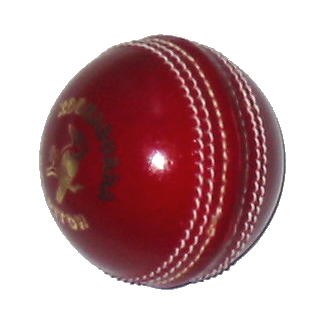Some Information about Cricket Ball
For men's cricket, the ball must weigh between 5.5 and 5.75 ounces (155.9 and 163.0 g) and measure between 8 13/16 and 9 in (224 and 229 mm) in circumference. Balls used in women's and youth matches are slightly smaller.
A cricket ball may not be replaced except under specific conditions described in the Laws of Cricket:
* If the ball becomes damaged or lost.
* If the condition of the ball is illegally modified by a player.
* In Test cricket, after 80 overs, the captain of the bowling side has the option to take a new ball.
* In One Day Internationals, previously there is a mandatory change of the ball at the start of the 35th over of each innings. The replacement will be a clean used ball, not a new ball. This rule was introduced in June 2007
In October 2011 new changes introduced in ODI format to use two white balls in an inning - one from either end. This also removes the mandatory change of ball after 34th over.
The ball is not replaced if it is hit into the crowd - the crowd must return it. If the ball is damaged, lost, or illegally modified, it will be replaced by a used ball in similar condition to the replaced ball. A new ball can only be used after the specified minimum number of overs have been bowled with the old one.
The umpires will inspect the ball frequently during a match. It is illegal for a player to:
* rub any substance apart from saliva or sweat onto the ball
* rub the ball on the ground
* scuff the ball with any rough object, including the fingernails
* pick at or lift the seam of the ball.


White balls are used in all limited overs cricket where coloured clothing is worn.
A pink ball was used for the first time in an international match in July 2009 when the England Woman's team defeated Australia at Wormsley
The directions in which a right-handed batsman intends to send the ball when playing various cricketing shots. The diagram for a left-handed batsman is a mirror image of this one.The white ball has been found to swing a lot more during the first half of the innings than the red ball and also deteriorates more quickly, although manufacturers claim that white and red balls are manufactured using the same methods and materials.
No comments:
Post a Comment